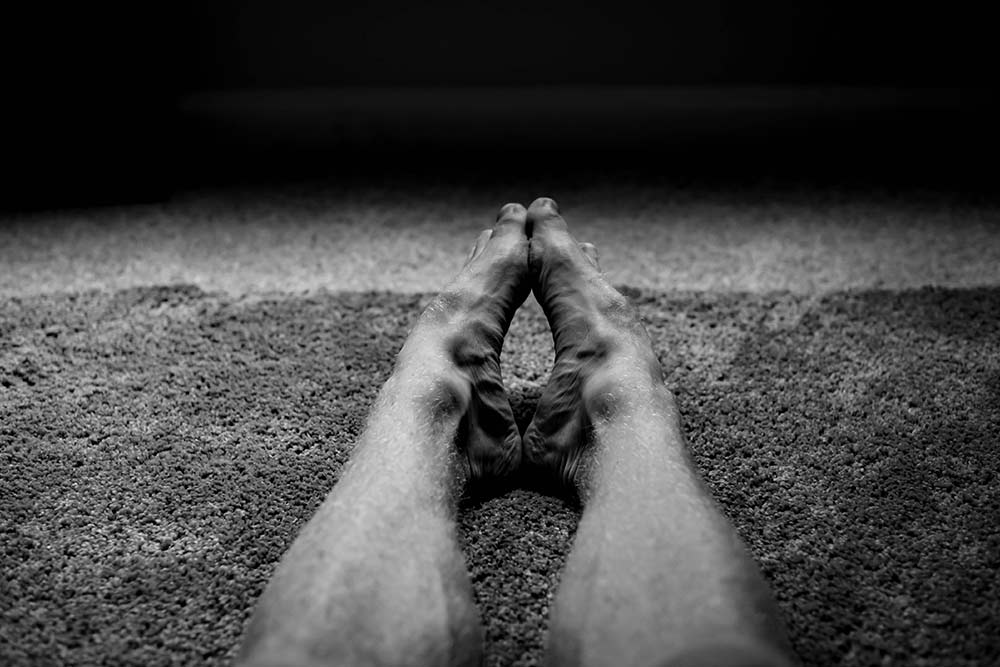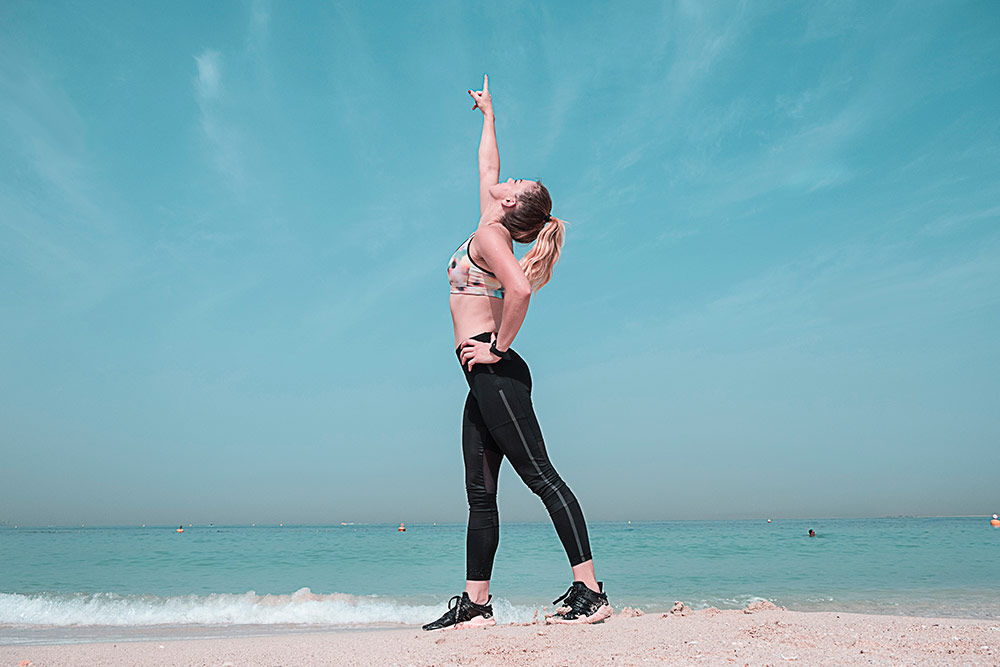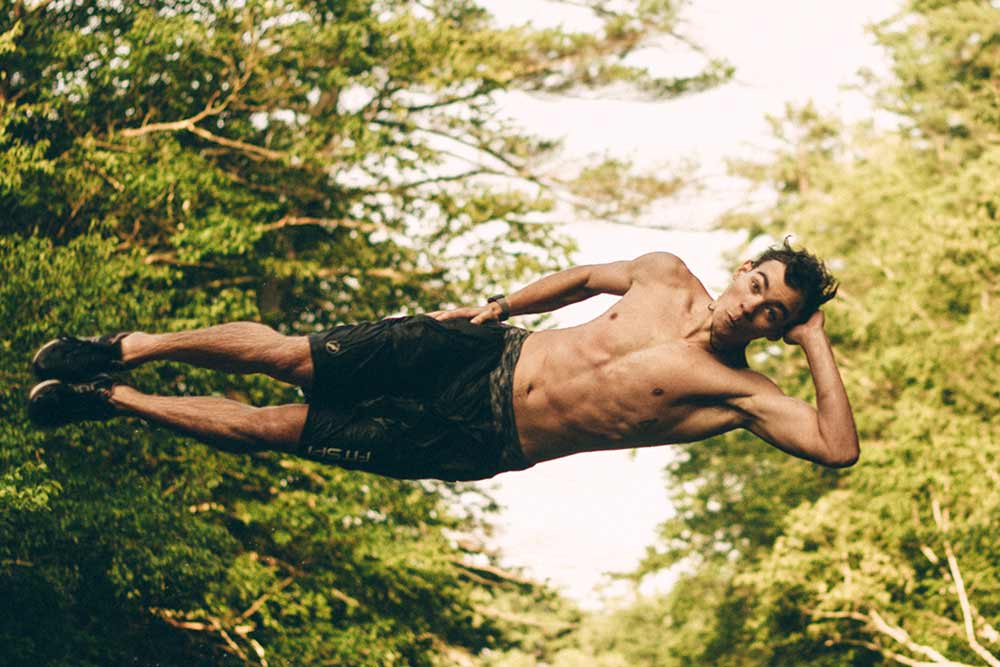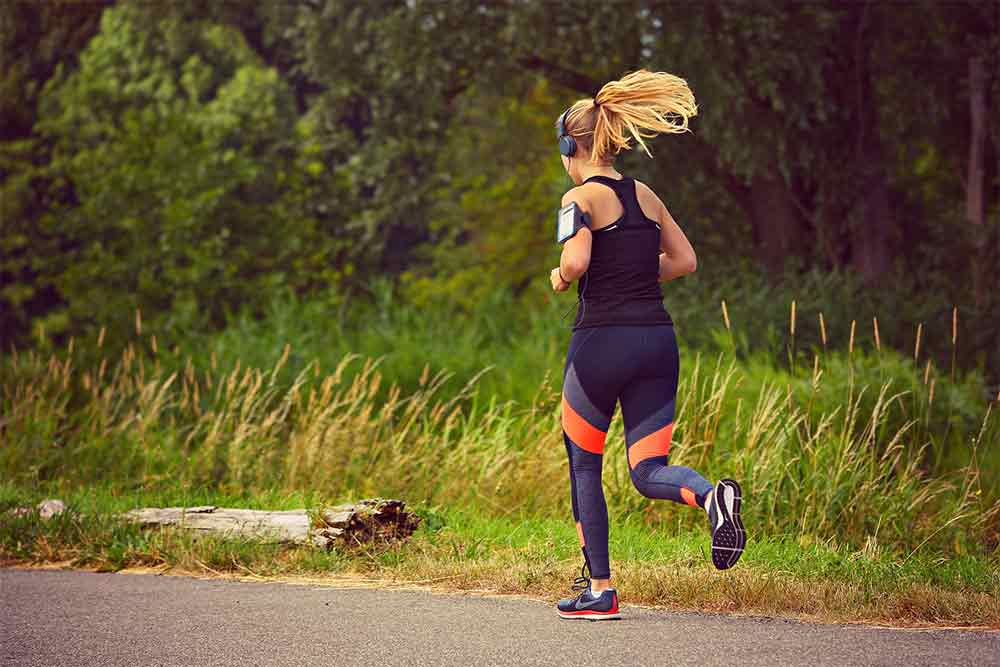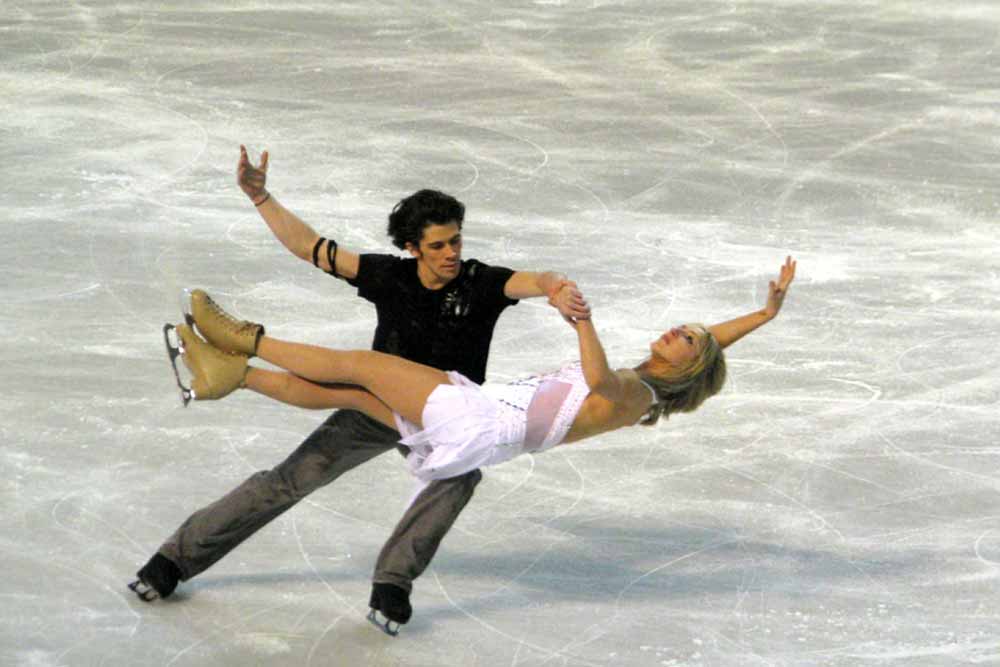Should Your Next HIIT Workout Be Barefoot?
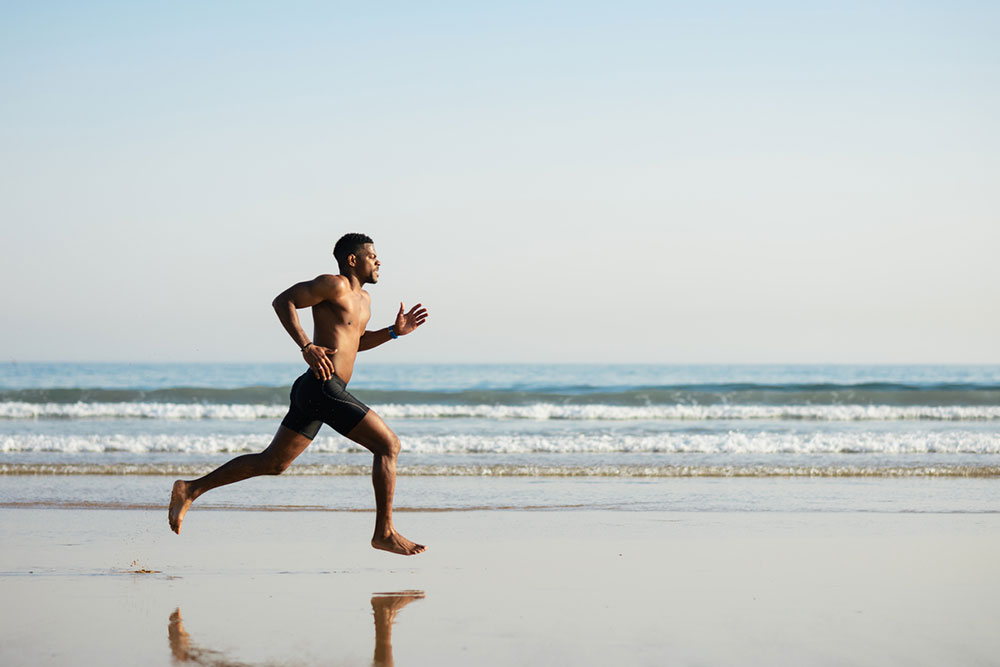
Dayton Kelly
Of rising popularity, especially with the invent of “toe shoes”, is exercising barefoot or in minimalistic footwear. This hype supporting the rejection of conventional shoes is largely based behind the theory that evolution has shaped our bodies to live in our bare feet (Altman & Davis, 2012). Evidence of foot attire does not appear in historical or fossil evidence until 10000 years ago, and it seems our “hunter-gatherer” ancestors must have evolved to live without shoes (Altman & Davis, 2012).
Given the immense amount of walking, running, climbing, and general physical activity their lives entailed, it seems likely natural selection would favour anthropometry that limits injury and maximizes efficiency when in bare feet. By returning to this barefoot state, minimalistic shoe advocates suggest it would reduce injury (including foot, knee and back pain – see Back Pain? The Germans May Have Found A Cure) and increase foot health (Hollander, Heidt, Van Der Zwaard, Braumann, & Zech, 2017; Zanis, 2016). While many people are quick to pain or injury when exercising barefoot, enthusiasts reply that these grievances are likely the result of instabilities in the ankle and foot created because of years of having worn shoes and living sedentary lifestyles (Zanis, 2016).
Related Article: 6 Cures For Sore Muscles After HIIT
The Idea Of Barefoot Living
 The idea of barefoot living and exercise contrasts the popular movement to shoe orthotics. Orthotics are worn under the feet to act as supports and are commonly employed to prevent a collapse of the arch of the foot and maintain the proper angle of the foot relative to the shin and knee during gait (Brund, et al., 2017). Proper ankle angle (which may be compromised by a collapse of the arch) causes joints used during gait (such as the ankles, knee, and hips) to track outside of their normal ranges. For example, the knee may move more sideways as opposed to forwards than is optimal. This puts undo stress on joints and ligaments that are not adapted to bear the normal stresses of running or other exercise, inducing injury (Brund, et al., 2017). Where barefoot enthusiasts suggest barefoot walking should develop the strength in the arch and stabilizing muscles to prevent such occurrences, orthotics instead bandage the problem by artificially changing the surface upon the ground the individual is standing. So which stance is correct?
The idea of barefoot living and exercise contrasts the popular movement to shoe orthotics. Orthotics are worn under the feet to act as supports and are commonly employed to prevent a collapse of the arch of the foot and maintain the proper angle of the foot relative to the shin and knee during gait (Brund, et al., 2017). Proper ankle angle (which may be compromised by a collapse of the arch) causes joints used during gait (such as the ankles, knee, and hips) to track outside of their normal ranges. For example, the knee may move more sideways as opposed to forwards than is optimal. This puts undo stress on joints and ligaments that are not adapted to bear the normal stresses of running or other exercise, inducing injury (Brund, et al., 2017). Where barefoot enthusiasts suggest barefoot walking should develop the strength in the arch and stabilizing muscles to prevent such occurrences, orthotics instead bandage the problem by artificially changing the surface upon the ground the individual is standing. So which stance is correct?
Related Article: How To Treat Common Running Injuries
Is The Evidence There?
Orthotics have received a good deal of empirical support for reducing running and other exercising related injury (Bonanno, Landorf, Munteanu, Murley, & Menz, 2017; Bonanno DR, Murley GS, Munteanu SE, Landorf KB, 2017). Little strong evidence has been gathered with regard to barefoot exercise that suggest the same benefit (Hollander, Heidt, Van Der Zwaard, Braumann, & Zech, 2017). Most support for barefoot running has been anecdotal in nature coming from therapists or elite athletes advocating for the trend. Perhaps the most convincing piece of evidence is the sheer amount of running-related injuries that occur despite the fact that most people are wearing shoes that should be protecting them from injury (Videbæk, Bueno, Nielsen, & Rasmussen, 2015). However, the most recent review of the literature found limited evidence for a difference in injury rate between populations that habitually go barefoot and those that wear shoes over the long term (Hollander, Heidt, Van Der Zwaard, Braumann, & Zech, 2017).
Takeaway
Thus, for the time being, it is advisable to stick to your shoes until better supporting evidence emerges. If you believe in the barefoot movement, it, regardless, seems important not to start your transition to a barefoot lifestyle with exercise. Individuals in transitionary periods suffer more ankle instability and therefore are more likely to be injured when testing their body during exercise (Tam, et al., 2017; Hollander, Heidt, Van Der Zwaard, Braumann, & Zech, 2017). It would be better to begin slowly, perhaps walking around the house, before exercising barefoot is tested. Best wishes and happy training Forever Fit Sciences!
Related Video: Don’t Skip Ankle Mobility
You Might Like:
Ketogenic Diet and Running: What You Need to Know
If you have been around the health and fitness space over the last few years, then you would have heard about the ketogenic diet. You know that diet that helps with weight loss, metabolic disease,...Are Runners Less Likely to Develop COVID-19?
In this weird time of COVID-19, I have heard some strange suggestions regarding how you can prevent infection. Things like drinking colloidal silver, eating more oranges, and bathing in vinegar all come to mind. But...5 Ways to Get Rid of Shin Splints
Ryan Cross, Physiotherapist Pain related to “shin splints” is one of the most common ailments that athletes will complain about. Most runners have had a run-in with the dreaded shin splints at one time or...The Most Efficient Way to Run Faster
Evan Stevens, Sprint Coach Phosphocreatine is the most immediate source of energy we have access to run faster. It is separate from the glycolytic (anaerobic) and mitochondrial (aerobic) pathways and is a way to rapidly...Upper Body Workouts For Distance Runners
When we run long distances it is crucial to focus on form, function, and balance. Running efficiency is effected by all of these, and it will subsequently impact performance if not properly addressed. By limiting...Use the Hurdle Step to Test Your Running Mechanics
An easy way to test or observe your running mechanics is to use the Functional Movement Screen (FMS) Hurdle Step approach. As you will see in the video, this technique will enhance proper running mechanics,...Altman, A. R., & Davis, I. S. (2012). Barefoot running: biomechanics and implications for running injuries. Current sports medicine reports, 11(5), 244-250. Retrieved from http://www.runsaferunfast.com/documents/00149619-201209000-00009.pdf.
Bonanno, D. R., Landorf, K. B., Munteanu, S. E., Murley, G. S., & Menz, H. B. (2017). Effectiveness of foot orthoses and shock-absorbing insoles for the prevention of injury: A systematic review and meta-analysis. British Journal of Sports Medicine, 51(2), 86–96. https://doi.org/10.1136/bjsports-2016-096671
Bonanno DR, Murley GS, Munteanu SE, Landorf KB, M. H. (2017). Effectiveness of foot orthoses for the prevention of lower limb overuse injuries in naval recruits: A randomised controlled trial. British Journal of Sports Medicine. https://doi.org/DOI: 10.1136/bjsports-2017-098273
Brund, R. B., Rasmussen, S., Nielsen, R. O., Kersting, U. G., Laessoe, U., & Voigt, M. (2017). Medial shoe-ground pressure and specific running injuries: A 1-year prospective cohort study. Journal of Science and Medicine in Sport, 20(9) 830-834. Retrieved from https://www-sciencedirect-com.cat1.lib.trentu.ca/science/article/pii/S1440244017303717?via%3Dihub.
Hollander, K., Heidt, C., Van Der Zwaard, B. C., Braumann, K. M., & Zech, A. (2017). Long-term effects of habitual barefoot running and walking: a systematic review. Medicine & Science in Sports & Exercise, 49(4), 752-762. Retrieved from https://www.researchgate.net/profile/Karsten_Hollander/publication/309617514_Long-Term_Effects_of_Habitual_Barefoot_Running_and_Walking_A_Systematic_Review/links/5a1586240f7e9bc6481b26ef/Long-Term-Effects-of-Habitual-Barefoo.
Tam, N., Coetzee, D. R., Ahmed, S., Lamberts, R. P., Albertus-Kajee, Y., & Tucker, R. (2017). Acute fatigue negatively affects risk factors for injury in trained but not well-trained habitually shod runners when running barefoot. European journal of sport science, 17(9), 1220-1229. Retrieved from http://www.tandfonline.com/doi/abs/10.1080/17461391.2017.1358767.
Videbæk, S., Bueno, A. M., Nielsen, R. O., & Rasmussen, S. (2015). Incidence of Running-Related Injuries Per 1000 h of running in Different Types of Runners: A Systematic Review and Meta-Analysis. Sports medicine, 45(7), 1017-1026. Retrieved from https://link.springer.com/article/10.1007/s40279-015-0333-8.
Zanis, M. (2016, July 19). So, you walk like a duck: The evolution of the collapsed arch. Retrieved from MEDBRIDGE: https://www.medbridgeeducation.com/blog/2016/07/so-you-walk-like-a-duck-the-evolution-of-the-collapsed-arch/



